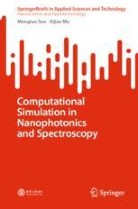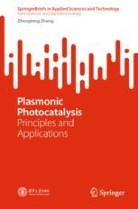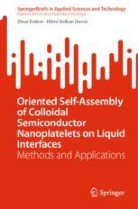
About this book series
Indexed by SCOPUS
Nanoscience and nanotechnology offer means to assemble and
study superstructures, composed of nanocomponents such as nanocrystals and
biomolecules, exhibiting interesting unique properties. Also, nanoscience and
nanotechnology enable ways to make and explore design-based artificial
structures that do not exist in nature such as metamaterials and metasurfaces.
Furthermore, nanoscience and nanotechnology allow us to make and understand
tightly confined quasi-zero-dimensional to two-dimensional quantum structures
such as nanopalettes and graphene with unique electronic structures. For
example, today by using a biomolecular linker, one can assemble crystalline
nanoparticles and nanowires into complex surfaces or composite structures with
new electronic and optical properties. The unique properties of these
superstructures result from the chemical composition and physical arrangement
of such nanocomponents (e.g., semiconductor nanocrystals, metal nanoparticles,
and biomolecules). Interactions between these elements (donor and acceptor) may
further enhance such properties of the resulting hybrid superstructures. One of
the important mechanisms is excitonics (enabled through energy transfer of
exciton-exciton coupling) and another one is plasmonics (enabled by plasmon-exciton
coupling). Also, in such nanoengineered structures, the light-material
interactions at the nanoscale can be modified and enhanced, giving rise to
nanophotonic effects.
These emerging topics of energy transfer, plasmonics, metastructuring and the like have now reached a level of wide-scale use and popularity that they are no longer the topics of a specialist, but now span the interests of all “end-users” of the new findings in these topics including those parties in biology, medicine, materials science and engineerings. Many technical books and reports have been published on individual topics in the specialized fields, and the existing literature have been typically written in a specialized manner for those in the field of interest (e.g., for only the physicists, only the chemists, etc.). However, currently there is no brief series available, which covers these topics in a way uniting all fields of interest including physics, chemistry, material science, biology, medicine, engineering, and the others.
The proposed new series in “Nanoscience and Nanotechnology” uniquely supports this cross-sectional platform spanning all of these fields. The proposed briefs series is intended to target a diverse readership and to serve as an important reference for both the specialized and general audience. This is not possible to achieve under the series of an engineering field (for example, electrical engineering) or under the series of a technical field (for example, physics and applied physics), which would have been very intimidating for biologists, medical doctors, materials scientists, etc.
The Briefs in NANOSCIENCE AND NANOTECHNOLOGY thus offers a great potential by itself, which will be interesting both for the specialists and the non-specialists.
- Part of this series
- SpringerBriefs in Applied Sciences and Technology
- Electronic ISSN
- 2196-1689
- Print ISSN
- 2196-1670
- Series Editor
-
- Hilmi Volkan Demir,
- Alexander O. Govorov
Book titles in this series
-

-
Second-Order Photogalvanic Photocurrents in 2D Materials
- Authors:
-
- Mustafa Eginligil
- Ting Yu
- Copyright: 2024
Available Renditions
- Soft cover
- eBook

-
Computational Simulation in Nanophotonics and Spectroscopy
- Authors:
-
- Mengtao Sun
- Xijiao Mu
- Copyright: 2023
Available Renditions
- Soft cover
- eBook

-
Plasmonic Photocatalysis
Principles and Applications
- Authors:
-
- Zhenglong Zhang
- Copyright: 2022
Available Renditions
- Soft cover
- eBook

-
Oriented Self-Assembly of Colloidal Semiconductor Nanoplatelets on Liquid Interfaces
Methods and Applications
- Authors:
-
- Onur Erdem
- Hilmi Volkan Demir
- Copyright: 2022
Available Renditions
- Soft cover
- eBook

Abstracted and indexed in
-
- EI Compendex
- SCImago
- SCOPUS
